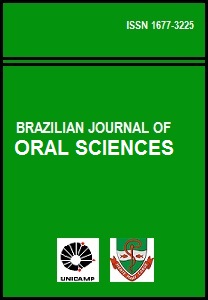Abstract
Atherosclerosis is a chronic inflammatory disease that can cause death and physical and/or mental disabilities. It represents a serious public health problem owing to the high healthcare costs involved in rehabilitating patients. Among the different methods available for diagnosing atherosclerotic disease, color Doppler examination may be considered the “gold standard.” On the other hand, panoramic radiography of the jaws (PRJ) is a diagnostic resource commonly used by dentists, and the obtained images allow examining other structures apart from the maxilla and the mandible. Aim: To evaluate the sensitivity and accuracy of panoramic radiography in identifying calcified carotid atheroma, and compare the results to those obtained with color Doppler examination. Methods: Forty-two cervical regions were evaluated in panoramic radiographs and color Doppler scans. The kappa test (p < 0.05) was used to assess agreement between the examinations. Data were tested for sensitivity, specificity and negative predictive value, as well as positive and negative likelihood ratios. Results: The kappa value was 0.11. The sensitivity and specificity of PRJ were 73.9 and 36.8%, respectively, and the positive and negative likelihood ratios were 1.2 and 0.7, respectively. Conclusions: Although a low correlation between PRJ and color Doppler examination was observed, as shown by the kappa test, the sensitivity of PRJ in identifying calcified carotid atheroma was considered acceptable.The Brazilian Journal of Oral Sciences uses the Creative Commons license (CC), thus preserving the integrity of the articles in an open access environment.
Downloads
Download data is not yet available.

